Joliet, IL Pollen and Allergy Report for Summer 2023
Pollen Allergy Trends in Joliet, IL
When is pollen lowest in Joliet, IL?

March
Lowest month total PPM
Avg. PPM
When is pollen highest in Joliet, IL?

May
Highest month total PPM
Avg. PPM
How does pollen in Joliet, IL compare to Illinois?
Joliet has a lower average PPM than the state of Illinois.
Joliet yearly avg PPM:
Illinois yearly avg PPM:
How does pollen in Joliet, IL compare to the USA?
Joliet has a higher average PPM than the USA.
Joliet yearly avg PPM:
USA yearly avg PPM:
Is pollen worse this year in Joliet, IL?
Spring 2023 was worse than spring 2022.
Spring 2023 PPM:
Spring 2022 PPM:
Average PPM in Joliet, IL
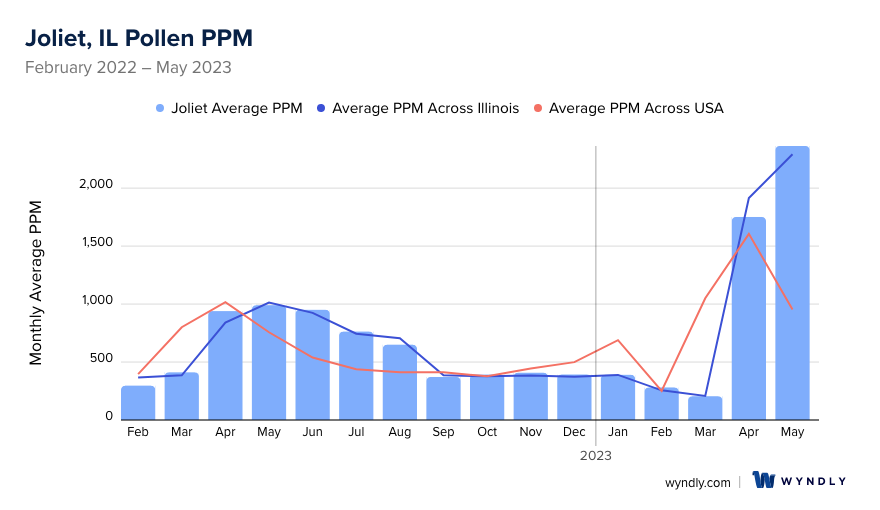
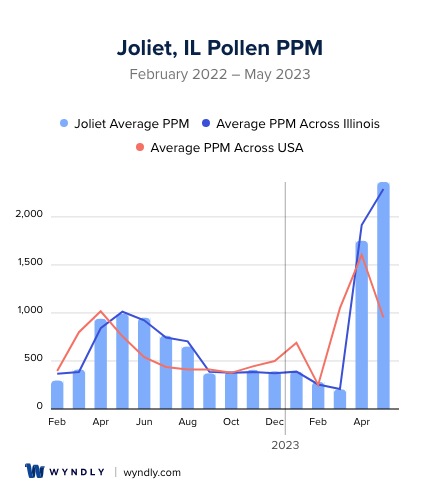
Joliet, IL Pollen and Allergy Breakdown by Month
Grass
When is grass pollen highest in Joliet, IL?
July has the highest grass pollen in Joliet, IL with an average PPM of
When is grass pollen lowest in Joliet, IL?
October has the lowest grass pollen in Joliet, IL with an average PPM of
Tree
When is tree pollen highest in Joliet, IL?
May has the highest tree pollen in Joliet, IL with an average PPM of
When is tree pollen lowest in Joliet, IL?
October has the lowest tree pollen in Joliet, IL with an average PPM of
Weed
When is weed pollen highest in Joliet, IL?
April has the highest weed pollen in Joliet, IL with an average PPM of
When is weed pollen lowest in Joliet, IL?
February has the lowest weed pollen in Joliet, IL with an average PPM of
Joliet, IL Pollen Monthly Breakdown by Pollen Type
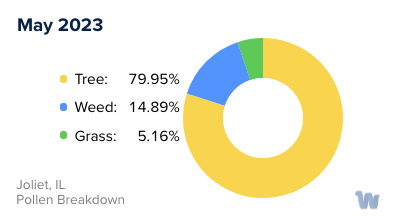
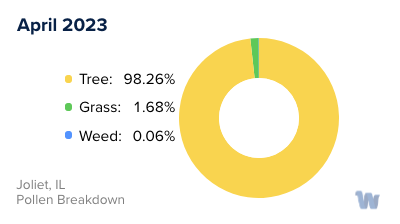
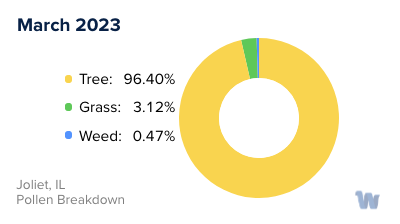
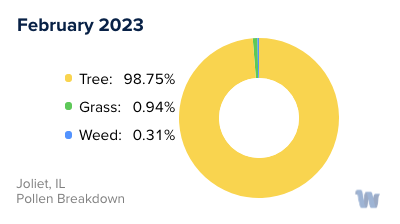
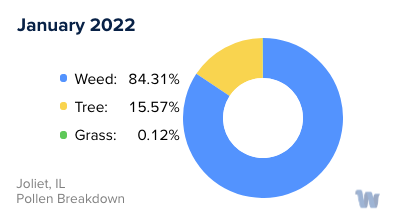
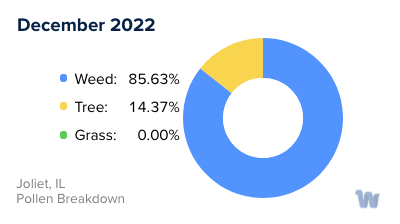
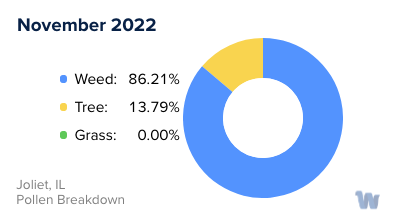

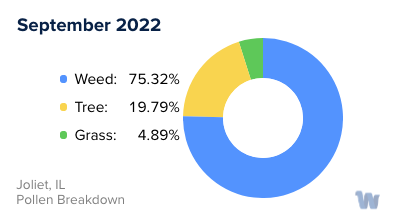
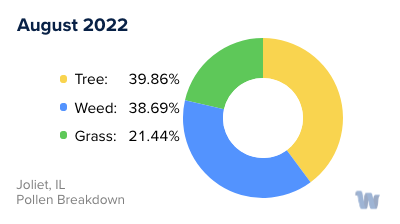
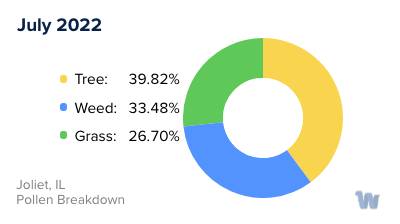
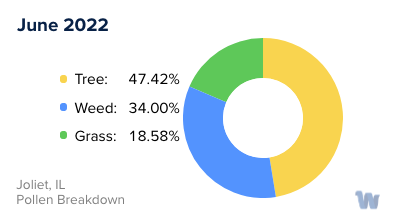
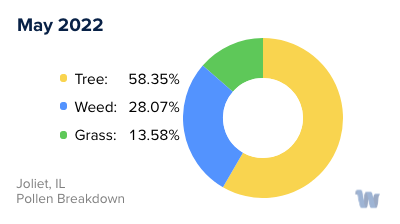
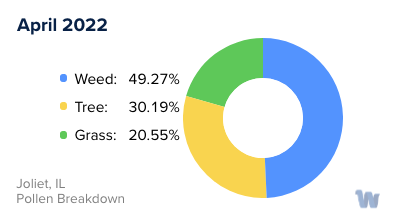
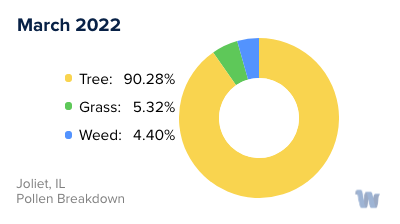
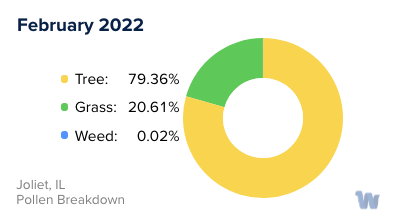
Pollen and Hay Fever in Joliet, IL
Allergy season in Joliet, Illinois, brings a flurry of sneezes, watery eyes, and runny noses for those sensitive to pollen. This condition, commonly known as hay fever, is caused by an overactive immune response to certain types of airborne pollen. As we delve into the world of pollen allergies, it's essential to note that the intensity and timing of the allergy season can vary based on the types of pollen present and the local climate.
In Joliet, there are three primary types of pollen that drive hay fever symptoms: tree, grass, and weed pollen. Each of these has its own 'pollen season,' during which time the plants release their pollen into the air.
Tree pollen season typically begins in early spring. This is when deciduous trees such as oak, maple, and birch release their pollen. These trees are quite common in Illinois, and their tiny, lightweight pollen grains can travel for miles, making them a significant allergen source for the city's residents.
Following the tree pollen season, grasses take over in late spring and early summer. Among the grasses, Timothy grass, Kentucky bluegrass, and ryegrass are common culprits for triggering hay fever symptoms. These grasses are often used for lawns and landscaping, making it hard to avoid exposure.
Finally, as summer transitions into fall, weed pollen becomes prevalent. Ragweed is the most notorious of the weed pollens and is abundant in the Midwest. A single ragweed plant can produce up to a billion grains of pollen per season, which can travel vast distances, exacerbating hay fever symptoms for many.
The timing and severity of these pollen seasons can fluctuate year to year based on weather conditions. Warmer and windier conditions can lead to more pollen in the air, while rainy days can help wash the pollen away, providing temporary relief.
In conclusion, pollen allergies in Joliet, Illinois, are driven by the changing seasons and the prevalence of specific types of trees, grasses, and weeds. Understanding these cycles can help those affected anticipate and prepare for the allergy season, even though the pesky pollens are hard to avoid completely.


